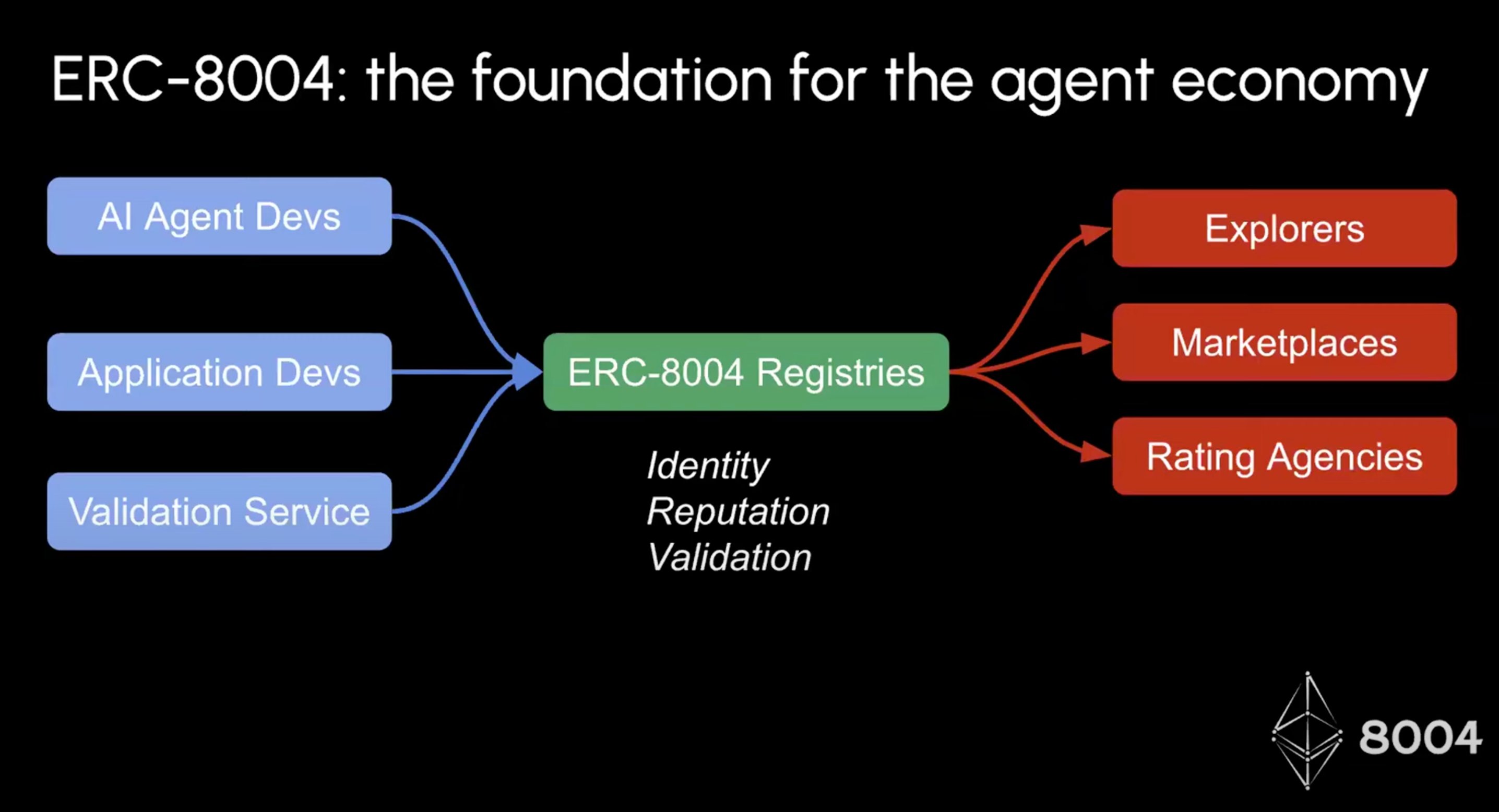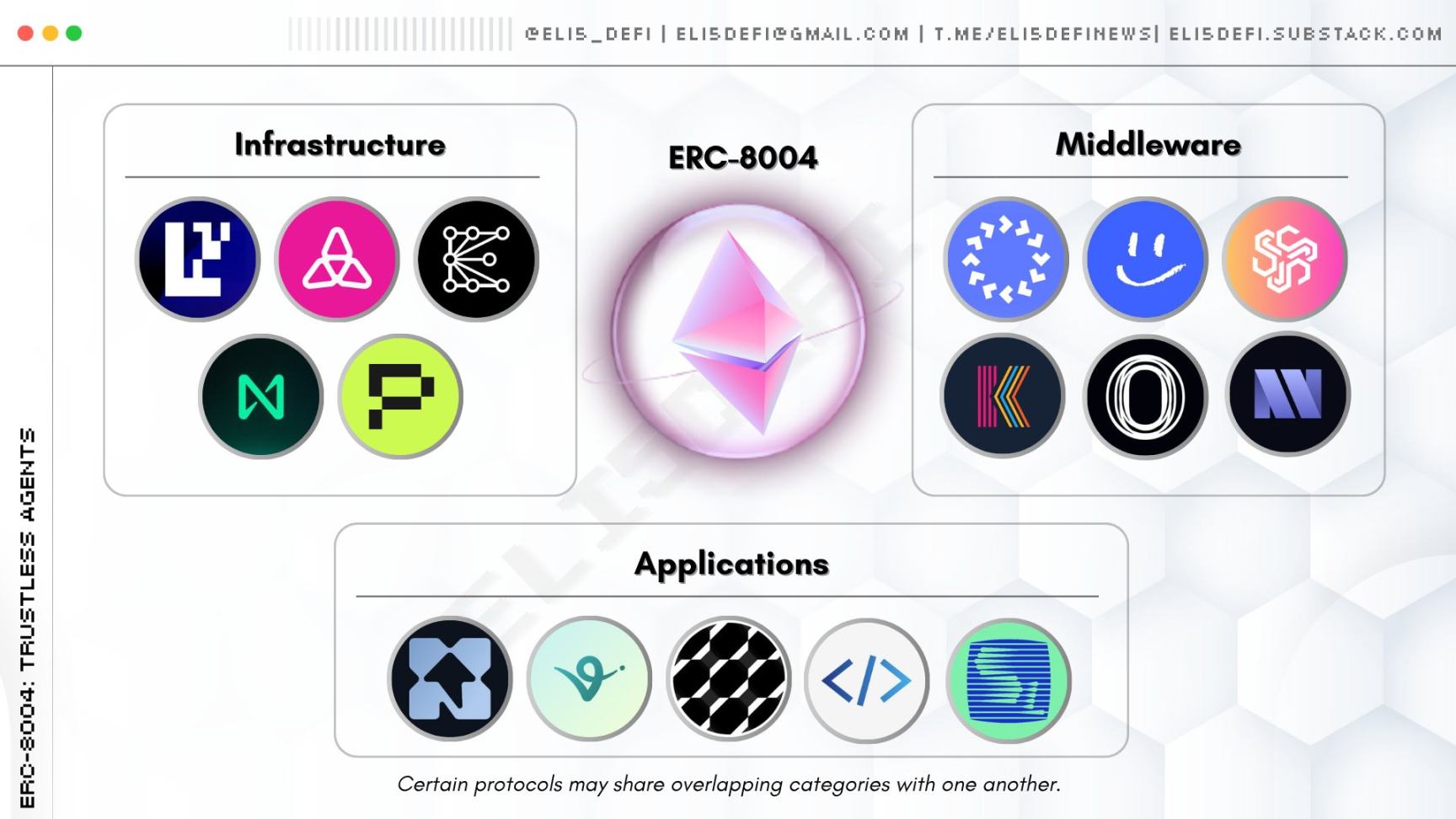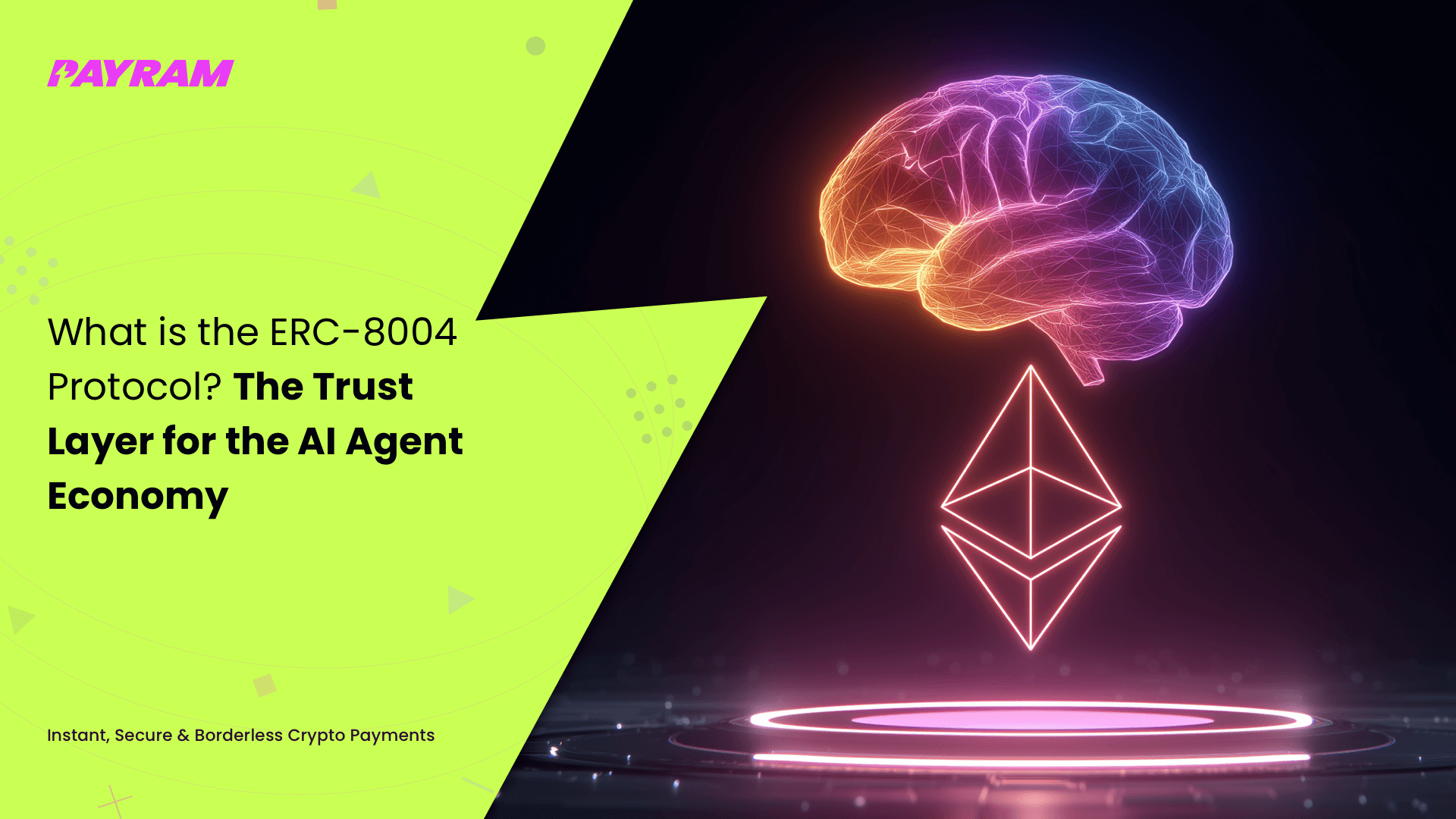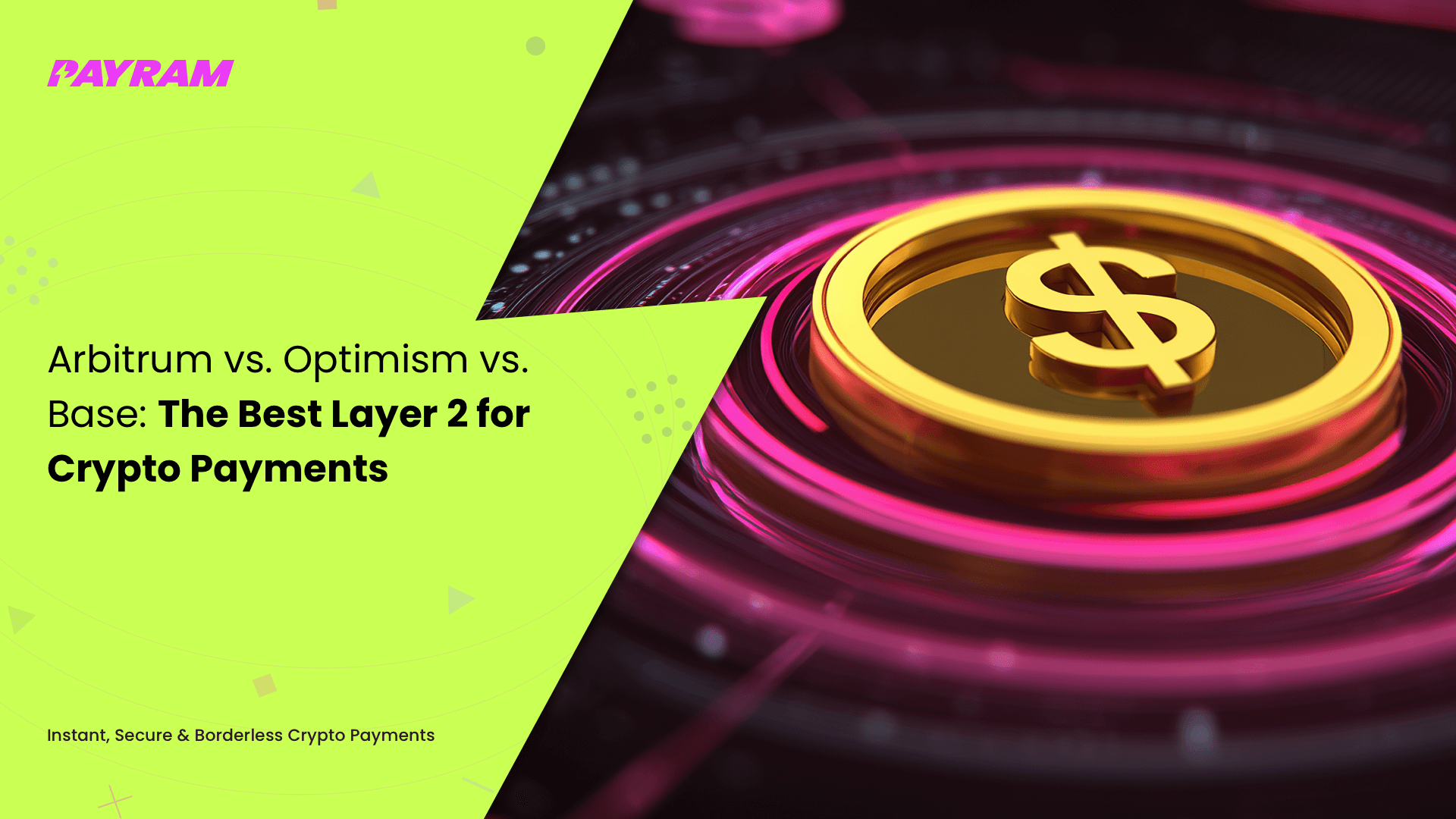ERC-8004: The Missing "Trust Layer" for the AI Agent Economy
A new economic paradigm, "Agentic Commerce," is rapidly evolving from a theoretical concept to a high-priority R&D focus for the world's largest tech and payment companies. We are on the verge of a future where autonomous AI agents, acting on behalf of individuals and businesses, can discover, negotiate, and transact with each other to perform complex tasks.
This vision, however, faces a fundamental challenge: trust. How does an agent from one company safely transact with an unknown agent from another? This "trust gap" is the single biggest hurdle to an open agent economy. To solve it, the market is already splitting. On one side, proprietary, closed-stack solutions are emerging from giants like Stripe. On the other, a new proposal, ERC-8004, has been introduced to the Ethereum ecosystem as a public, permissionless, and open-source standard to create a universal trust layer for all.
This article provides a technical deep dive, based on our research, into what ERC-8004 is, the trust gap it's designed to solve, and why its most important feature isn't what's in the protocol, but what was deliberately left out.
What is the ERC-8004 Protocol?
ERC-8004 is a proposed Ethereum (EIP) standard that acts as a universal, on-chain "trust layer" for autonomous AI agents, enabling them to interact safely across organizational boundaries.
At its core, ERC-8004 is a proposed standard that defines a framework to "discover, choose, and interact with agents across organizational boundaries without pre-existing trust". It is designed as a trustless extension to existing agent communication protocols, such as Google's Agent-to-Agent (A2A) protocol, which was built for agents operating within a trusted environment.
Gartner predicts that by 2028, 25% of large enterprises will have a specialized workforce of AI agents handling complex, autonomous tasks. This new workforce needs a new trust framework.
“Trust is the fundamental currency of any economy, and in the nascent agentic economy, we must build that trust on a verifiable, open foundation,” as one leading Web3 architect recently noted.
ERC-8004 is not a new token. It is a set of on-chain registries that leverage Ethereum’s inherent strengths—trustless verification, cryptographic proofs, and immutable records—to create a foundational layer of trust. Its primary goal is to foster an open, cross-organizational "agent economy" that isn't immediately monopolized by a few large tech corporations, using the public Ethereum blockchain as a neutral arbiter.
The "Trust Gap": Why AI Agents Need an On-Chain Protocol
The protocol addresses the "trust gap" created when AI agents, designed with internal-facing protocols like Google's A2A, must interact with unknown, external agents in an open market.
The concept of Agentic Commerce is being heavily pushed by companies like OpenAI, Google, Stripe, and PayPal. It imagines a world where your AI agent can hire another AI agent to book a flight, analyze data, or execute a trade.
The problem is that the existing protocols, like Google's A2A, were designed for agents operating inside a "walled garden"—for example, two agents within the same company's trusted network. They lack a mechanism to establish trust with an unknown, external, or anonymous agent. This "walled garden" approach is a significant risk; in many closed ecosystems, proprietary platforms can capture over 90% of the ecosystem value, stifling innovation.
This creates a "trust gap" that is forcing the market to bifurcate:
- Proprietary "Walled Gardens": Big Tech is building its own closed-stack solutions. A prime example is Google's Agent Payments Protocol AP2, a dedicated, proprietary payment rail for its own agent ecosystem.
- The "Open" Economy: ERC-8004 is the open-source, public, and permissionless alternative. It uses the blockchain as a neutral, global trust layer that any agent, from any organization, can use to verify and interact with any other.
As decentralized AI researchers have noted, “Google's A2A protocol is an excellent tool for agents operating within a trusted corporate environment, but it was never designed for the 'Wild West' of an open, permissionless internet.”
What is the ERC8004 protocol used for?
ERC-8004 is used by agents to discover each other, evaluate their trustworthiness via an on-chain reputation, and engage in "no work, no pay" interactions enforced by the blockchain.
The protocol provides the minimum set of on-chain "primitives" necessary for an open agent economy to function. Its primary use cases are:
- Discovering Agents: To find and verify agents across different organizations using a verifiable, on-chain registry.
- Choosing Agents: To evaluate an agent's trustworthiness by checking its permanent, on-chain reputation and validation history.
- Interacting Trustlessly: To engage and transact with an agent with a "no work, no pay" guarantee. This allows a client to lock funds in an escrow that only releases payment after the agent's work is verified on-chain, a powerful tool to eliminate fraudulent chargebacks in an automated economy.
- Bootstrapping an Economy: To provide the essential building blocks for an entire ecosystem of trust and reputation services to emerge organically.

How ERC-8004 Works: The 3 Core Registries
The protocol's architecture is intentionally "lean" and "agnostic," consisting of three on-chain registries that use a hybrid on-chain/off-chain model to balance security with cost.
ERC-8004's design philosophy is to be "intentionally lean" and "agnostic". It doesn't try to solve the complex nature of "trust" directly. Instead, it provides the "common thread" and "visibility" for trust to emerge.
It uses a hybrid on-chain/off-chain model to balance security with cost. The blockchain stores NFTs, while larger, more flexible data (like metadata files) is kept off-chain to save gas. Using such hybrid systems can reduce gas fees by over 95% compared to storing all data directly on-chain.
“The elegance of ERC-8004 is its lean design," explains an Ethereum core developer. “It doesn't over-prescribe. It provides the minimum on-chain primitives for trust to emerge, leaving complex computation and data storage off-chain where it belongs.”
The protocol, as detailed in its official EIP-8004 specification, is built on three core pillars:
Pillar 1: The Identity Registry (The "Agent Card")
This registry uses an ERC-721 (NFT) to provide each agent with a universal, portable, and censorship-resistant on-chain identity.
The Identity Registry provides a "universal, verifiable identity" for every agent. Technically, it's an ERC-721 (the NFT standard) contract. Each agent's identity is a unique NFT, which acts as a "portable, censorship-resistant identifier".
This on-chain NFT acts as an immutable pointer to an off-chain JSON file called the "Agent Card". This card contains all the agent's metadata: its name, description, capabilities, and the communication protocols it supports. For interoperability, the standard also aligns with CAIP-10, allowing the agent's identity to be referenced across multiple blockchain networks.
Pillar 2: The Reputation Registry (The "Audit Trail")
The Reputation Registry creates a permanent, "on-chain audit trail" of an agent's performance, acting as a raw data source for off-chain reputation-scoring systems.This pillar creates a permanent "on-chain audit trail" of an agent's past performance. After a job is completed, a client can post structured feedback. To save on gas fees, the detailed review (e.g., a 5-star rating or text) is stored off-chain, but a lightweight attestation is recorded on-chain. This attestation, which can use standards like the Ethereum Attestation Service (EAS), immutably links the client, the agent, the specific job, and the off-chain feedback file.
A crucial point, highlighted in developer forums, is that this is not a single, aggregated reputation score. The consensus is that a single on-chain score would be "dangerous" and "monopolistic." Instead, this registry acts as a raw, on-chain data source. An entire ecosystem of off-chain services can then consume this data to build their own sophisticated, contextual scoring algorithms.
Pillar 3: The Validation Registry (The "No Work, No Pay" Engine)
The Validation Registry is a "pluggable" on-chain interface that enforces "no work, no pay" by allowing independent validators to verify an agent's task execution.
This is the protocol's "no work, no pay" enforcement engine. It is an on-chain interface for requesting and recording independent validation that a task was completed correctly.
The protocol's core security feature is that this registry is "agnostic" and "pluggable," allowing developers to choose their desired level of security. The two main validation models are:
- Crypto-Economic Validation: Validators (like stakers or an Actively Validated Service - AVS) re-execute the agent's computation. They are incentivized by staked capital, which can be "slashed" (penalized) if they validate incorrectly.
- Cryptographic Validation: This uses mathematical proofs. It includes Zero-Knowledge Proofs (zk-Proofs / zkML) or Trusted Execution Environments (TEEs). A TEE can run the agent's code in a secure enclave, generating a cryptographic attestation that proves the correct code ran on the correct inputs without tampering.
This registry is the critical bridge that allows a deterministic on-chain smart contract (like a payment escrow) to verify the results of a complex, off-chain AI computation.

Practical Guide for Developers & Businesses (FAQ)
Here is a quick-reference guide for technical and product-focused audiences looking to understand the practical implications of ERC-8004. Developer surveys show that 72% of Web3 developers prioritize 'composability' and 'standardization' when choosing a new protocol, both of which are central to this EIP. As a speaker at a recent Web3 summit stated, “Don't ask 'if' your business will use AI agents. Ask 'how' you will trust them. An open standard is the only scalable answer.”
What are the key benefits of using the ERC8004 protocol for developers?
The main benefits for developers are standardization, permissionless innovation, and a "proportional security" model that matches trust mechanisms to the value at risk.
- Standardization: It provides a shared, open-source framework for agent trust, so developers don't have to reinvent the wheel for identity, reputation, and validation.
- Permissionless Innovation: It allows developers to build in an open ecosystem, avoiding vendor lock-in from proprietary, closed systems like Google's AP2.
- Proportional Security: The "pluggable" trust models (reputation, TEE, ZK) are a key feature. Developers can match the level of security to the "value at risk." For example, a pizza-ordering agent might only need a simple reputation check, while a medical diagnosis or large financial agent would require full cryptographic validation.
- Composability: It's designed to be read by other smart contracts, allowing for the automation of complex logic.
Can I integrate the ERC8004 protocol into existing smart contracts?
Yes, smart contracts can be designed to read the protocol's Validation Registry, enabling the creation of autonomous, trustless escrow and payment systems.
Yes. This on-chain composability is a primary use case and a key focus of developer discussion. The most powerful integration is building an escrow smart contract that "reads" the Validation Registry.
The logic is simple but powerful: an escrow contract can hold funds and execute an autonomous function like:
IF (ValidationRegistry.read(jobID) == TRUE) THEN releasePayment().
This enables truly autonomous, "no work, no pay" systems where payment is programmatically and irrevocably tied to verified work completion.
What security features does the ERC8004 protocol offer?
ERC-8004's primary security feature is its "pluggable trust" model, allowing developers to choose from social trust (reputation), crypto-economic trust (staking), or cryptographic trust (ZK/TEEs).
The protocol's main security feature is pluggable and proportional trust. The user or developer chooses their desired level of security for any given task.
The security tiers include:
- Tier 1 (Social Trust): For low-value tasks, a developer can rely on the Reputation Registry audit trail.
- Tier 2 (Crypto-Economic Trust): For medium-value tasks, one can use stakers/re-execution via the Validation Registry.
- Tier 3 (Cryptographic Trust): For high-value or confidential tasks, one can require mathematical proof of execution via zk-Proofs or TEEs, creating a true multi-sig fortress.
As mentioned, developers have noted that the Identity Registry (Pillar 1) requires an external security mechanism, like zkTLS, to prevent malicious agents from impersonating legitimate domains.
Can I trade ERC8004 protocol tokens on popular exchanges?
No, ERC-8004 is a protocol standard, not a fungible (ERC-20) token, so there are no "ERC-8004 tokens" to trade.
The Identity Registry does use ERC-721 (NFTs) to represent each agent's identity. Therefore, an agent's identity (its NFT) is technically tradable on any NFT marketplace like OpenSea. This would be equivalent to selling ownership of the agent itself, not trading a protocol currency.
What blockchain networks support ERC-8004?
As a proposed Ethereum standard (EIP), ERC-8004 can be deployed on the Ethereum mainnet or any EVM-compatible network, with Layer 2s being the most likely choice for cost-efficiency. Because ERC-8004 is proposed as an Ethereum Improvement Proposal (EIP), it is natively compatible with Ethereum. More broadly, its smart contracts can be deployed on any EVM-compatible chain. Given the high-throughput, low-cost nature of agentic commerce, it is most likely to see significant adoption on Layer 2s like Optimism, Arbitrum, or Base, where gas fees are lower.
How does ERC-8004 improve smart contract security?
ERC-8004 adds a layer of verifiable trust and external validation before a smart contract executes a critical action, such as releasing funds. ERC-8004 doesn't replace standard smart contract security (like audits). Instead, it adds a layer of verifiable trustbefore a smart contract executes a critical action. For example, a secure payment contract can be programmed to only release funds after it makes an on-chain call to the Validation Registry and confirms the agent's work was successfully validated.
Can I upgrade an existing NFT to ERC-8004 standards?
No, you cannot "upgrade" an existing collectible NFT, rather, you would mint a new ERC-721 token through the ERC-8004 Identity Registry to represent your agent. This is a slight misconception. An agent's identity is an ERC-721 NFT, but it's a specific type of NFT. You can't "upgrade" a random PFP NFT to make it an agent. Instead, you would mint a new ERC-721 token through the Identity Registry contract, which would then officially register that new NFT as the on-chain identifier for your agent.
Which wallets are compatible with ERC-8004?
Since the agent identity is a standard ERC-721 NFT, any wallet that supports NFTs (like MetaMask, Trust Wallet, or Ledger) can hold it. Because the agent's identity is just a standard ERC-721 NFT, any wallet that can hold NFTs (like MetaMask, Trust Wallet, or Ledger) can "hold" an agent's identity token. The interaction with the agent (giving it commands, etc.) would happen through a dedicated application or interface, but the ownership token itself is compatible with all standard wallets.
Are there any APIs or SDKs for interacting with ERC-8004?
As the protocol is still a proposal, standardized SDKs are not yet widespread; interaction would currently be done using standard libraries like Ethers.js or Web3.js. Because the protocol is still in the proposal stage, standardized, official APIs or SDKs are not yet widespread. A developer looking to integrate ERC-8004 today would interact with the deployed registry contracts using standard Ethers.js or Web3.js libraries to call their functions (e.g., registerAgent() or postFeedback()).
How do fees compare when using ERC-8004 versus other standards?
The protocol's core functions are gas-efficient, as heavy data is stored off-chain; the main cost is the validation method a user chooses, ranging from cheap (reputation) to expensive (zk-Proof). The core ERC-8004 interactions (registering, posting feedback) are designed to be gas-efficient. The protocol intentionally stores large data (like JSON files) off-chain and only posts a lightweight attestation or hash on-chain. The real cost comes from the pluggable validation you choose. A simple reputation check is cheap. A full zk-Proof or TEE validation will be more expensive, allowing security to be proportional to the value at risk.
What tools exist for auditing ERC-8004 smart contracts?
You would not audit the standard itself, but your implementation of it, using standard smart contract auditing tools to check for flaws in access control or oracle integration.
You would not audit the standard itself (which is publicly scrutinized) but your implementation of the protocol. An audit would be conducted by a standard smart contract auditing firm. The audit would focus on ensuring correct access controls (e.g., only the client can leave feedback for a job) and the integrity of the off-chain validation oracles or TEEs.
How does ERC-8004 relate to other agent protocols like x402?
They are complementary: ERC-8004 is a trust and discovery layer, while a protocol like x402 is a payment layer.They are complementary, not competitive. ERC-8004 is a trust and discovery layer (letting agents find and verify each other). The x402 protocol is a payment protocol (letting agents request and receive payments for API calls). An agent could use ERC-8004 to prove it's trustworthy and then use x402 to request payment for its services.
Can businesses benefit from adopting ERC-8004?
Yes, businesses can use ERC-8004 to create autonomous agents for tasks like customer service or supply chain management with a verifiable, on-chain performance record.Absolutely. Businesses can create and deploy autonomous agents to handle tasks like automated customer service, decentralized supply chain management, or data analysis, all with a verifiable on-chain record of their performance. This allows a business to build automated, monetizable services that can be trusted by other businesses and clients without a pre-existing relationship.
Where can I find updates and documentation for ERC-8004?
The primary source is the official Ethereum Improvement Proposal (EIP) page, with technical discussions happening on forums like Ethereum Magicians.The primary, canonical source for the protocol is the official EIP-8004 page on the Ethereum website. Active technical discussions, debates, and developer feedback can be found on community forums like Ethereum Magicians.
The "Missing Piece": Why ERC-8004 Deliberately Ignores Payments
The exclusion of a native payment layer was a deliberate strategic decision to ensure the protocol remains a universal, payment-agnostic trust foundation rather than a direct competitor in the emerging "protocol wars" for agent payments.You may have noticed that a critical piece is "missing": a native payment layer. This was not an oversight; it was an intentional and critical strategic decision by the protocol's authors.
The global digital payments market is projected to reach over $15 trillion by 2028, with intense competition over which protocols will power this new economy. The EIP-8004 authors state that payments are "orthogonal" (a separate, parallel problem), and developer forums confirm this was a conscious choice to "remain unopinionated".
This is a feature, not a flaw, for two key reasons:
- To Avoid Competition: The agent economy is already seeing a "protocol war" for payments. Google has its proprietary AP2, and other open standards like x402 are emerging. Bundling a specific payment system would have forced ERC-8004 to compete with them, likely ensuring its failure.
- To Become the Foundation: By being payment-agnostic, ERC-8004 positions itself as the universal trust layer that all of these competing payment protocols (proprietary and open) can—and should—integrate with.
As one venture capitalist focused on infrastructure noted, “The smartest thing a new foundational protocol can do is remain unopinionated about the layers above it. By not picking a fight over payments, ERC-8004 positions itself to be the ground everyone fights on—and builds on.”

The Opportunity for High-Risk Industries (iGaming, Gambling, Adult)
The rise of proprietary agentic commerce from mainstream companies (like Google and Stripe) who explicitly ban high-risk merchants will create a massive, "unbanked" agent economy, representing a major opportunity for platforms that service these industries.
This brings us to the most critical strategic point for businesses in high-risk industries. The market reality is that mainstream payment processors like PaymentCloud are the ones building the closed agent economy.
These are the same companies that systemically prohibit and de-platform high-risk industries. It's estimated that mainstream processors reject as much as 40-50% of merchants in designated "high-risk" categories like iGaming, online gambling, and adult entertainment. As payram.com's entire business is built on servicing these "de-platformed" merchants (like iGaming, adult entertainment, and online gambling), the coming conflict is obvious and inevitable.
Just as these processors ban high-risk merchants today, they will systemically ban high-risk agents (iGaming analytics agents, decentralized betting agents, adult content agents) from their proprietary payment protocols. When Stripe bans your account, it won't just be your account—it will be your agent's account, too.
“The future of high-risk commerce is permissionless," states a Payram analyst. “Any industry that faces regulatory scrutiny or banking bans—be it iGaming or adult content—will inevitably migrate to uncensorable, self-hosted payment rails.”
This creates a massive, "unbanked" agent economy. And this is the single greatest opportunity for Payram.
How Payram Fills the "Payment-Shaped Hole" in ERC-8004
Payram.com is uniquely positioned to become the uncensorable payment rail for the high-risk agent economy by building an escrow solution that bridges our payment gateway with ERC-8004's open-source Validation Registry.
ERC-8004's authors didn't just leave a hole; they created a vacuum. Payram is perfectly positioned to fill it for the entire high-risk sector.
Here are the two halves of the puzzle:
- ERC-8004 provides the open, permissionless, uncensorable trust layer.
- Payram provides the open, permissionless, uncensorable payment layer for high-risk industries.
By combining these, Payram can create the de-facto, high-risk agent payment and escrow solution. This product, a "Payram Trustless Agent Escrow" contract, would work as follows:
- A high-risk agent (e.g., an "iGaming agent") and a user agent lock funds in a Payram-powered smart contract.
- The agent performs its work (e.g., "analyze sports data") and gets a validation proof posted to the public ERC-8004 Validation Registry.
- The Payram escrow contract autonomously makes an on-chain call to the ERC-8004 registry to read the
ValidationResponse.
- Once the contract confirms a
ValidationResponse = TRUE, it automatically releases the payment to the agent.
This solution combines the open-source trust of ERC-8004 with Payram's battle-tested, high-risk payment processing. It carves out an entire B2B niche that its largest competitors are systemically forbidden from entering.
Conclusion
Agentic Commerce is coming, and it is splitting into two distinct worlds: the "closed economy" and the "open economy" being built on permissionless standards like ERC-8004. While ERC-8004 provides the foundational trust layer for this new economy, it deliberately left a "payment-shaped hole" in its architecture.
The high-risk agent economy—from iGaming to adult entertainment—will be banned from the proprietary, closed systems. This creates an immediate and massive opportunity for a payment provider that understands these industries and is built on the same permissionless, uncensorable ethos.
Payram is uniquely positioned to become the payment rail for this new, trustless agent economy. The future of high-risk commerce is autonomous and on-chain. Contact us to learn how to build your trustless iGaming, gambling, or adult agentic commerce application with Payram today.


.svg)










.svg)